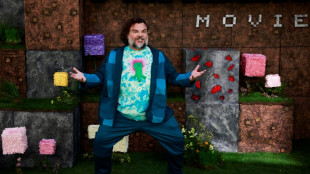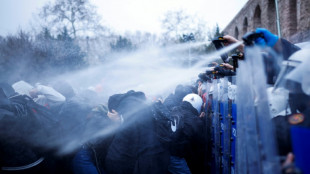

Mongolians warm up on culture at new winter festival
A festival in a frigid park on the edge of the world's coldest capital in February might not sound like a crowd-puller -- but in Mongolia an inaugural celebration of nomadic culture was in fine fettle this week.
The seven-day event is part of authorities' efforts to boost tourism during the country's bitter winters, when temperatures can drop to below minus 40 degrees Celsius (minus 40 Fahrenheit).
Though it was far warmer this week, a persistent wind whipped around glittering, metres-high ice sculptures as visitors ducked in and out of the round ger tents set up to showcase Mongolia's various provinces.
"There was no particular thing that surprised me very much, but... it was really nice to get an update and a refresher on our traditional culture," Ulaanbaatar resident Darkhan Altantsetseg told AFP.
"It's a nice way of reminding us that our culture is so rich."
Outside the gers, camels and reindeer shuffled around the vast grounds, while children delightedly launched themselves down ice slides or across a glacial track on fur-lined sleds.
Archers and eagle hunters demonstrated their skills, and a small crowd gathered around a game of shagai ice shooting -- a sport where players bowl a puck to try to hit animal bones across a frozen surface.
"Actually, today my husband participated in a competition for older people, and won gold! So I'm really happy," said Altantsetseg.
- Music, feasting -
The sounds of live music seeped gently from the gers despite their well-insulated walls.
In one, a three-piece of ethnic Kazakhs from the westernmost province of Bayan Olgii played and sang as curious onlookers were plied with milk tea.
"When Ulaanbaatar people enter (our ger), they are amazed by how luxurious it is and how different it is from most other Mongolian gers," said musician Badein Huatbyek, pointing out in particular the lack of central columns in the intricately decorated dwelling.
He himself had a shock coming to the capital this time.
"I was surprised to see how developed the city has become -- last time I visited was three or four years ago," he said.
With the Lunar New Year coming up on March 1, many gers had set up a dining table as if for the festival, with most of a roast sheep and a multi-layered biscuit tower the centrepieces.
Dressed in red hats and brightly patterned robes, two elderly ladies handed out airag -- fermented mare's milk -- before dancing a mischievous jig from Mongolia's west.
A percussionist used a string of sheep ankle bones to keep the beat as an ensemble, including a throat singer, performed an ode to nature.
Many Ulaanbaatar residents were also in traditional garments, decked out in furs and silks as they strode across the park's slippery paths.
A quarter of Mongolia's 3.4 million people lead nomadic lives, according to the World Bank, but hundreds of thousands have moved to the capital in the past two decades.
Agroeconomist Byambasure, visiting with his two daughters, told AFP his job meant he was in the field a lot.
But "my children were born and raised in Ulaanbaatar -- so they are not very familiar with our traditions and culture", the 50-year-old said.
"It's a good way for them to learn, so I'm glad I brought them here."
Y.Schmitz--RTC



